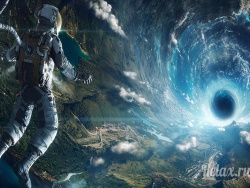Eating planets at a young age is not lost on the stars – their brightness and size, as well as the estimated age can be markedly different after they “eat” one of her companions, is told in article placed in electronic library Arxiv.org

Stars, as shown by recent observations of dozens of groups of astronomers, may periodically destroy and “eat” the planets that revolve around them. This can occur at the earliest stages of their existence, when the planets are born, and at the very end of their life when outer shell of the star to swell up and envelop the planet.
Emmanuel Tonielli (Emanuele Tognelli) from the University of Pisa (Italy) and his colleagues have discovered an unusual example of such stars-“planetoidal” and revealed the implications of such a “diet”, watching the star 2MASS J08095427–4721419 in the constellation of Sails.
This sun-like star, remote from us at about 1,100 light-years away, was open in 2014, and it immediately attracted the attention of scientists to the fact that she, judging by the high proportion of iron and other astronomical “metals” was noticeably older than all of its neighbors according to the star cluster. Such a fact seemed to her discoverers extremely strange thing – in the modern view, the lights in the same “stellar nurseries” are born in the same period of time.
The astronomers who discovered it suggested that such “old” view of the lights was due to the fact that it consumed in the recent past the planet whose bowels contained large quantities of iron, vanadium, aluminum, and other heavy items that were distributed through the upper layers of the star and made the distortions in its spectrum, without affecting its core.
Tonielli, and his colleagues have found that actually eating planets significantly changes not only the shape but the placement of stars and the nature of their further evolution, having considered what was going to happen in the bowels of the 2MASS J08095427–4721419, with the aid of supercomputer models.
For example, eating the planet, whose mass is 7-8 times larger than the earth, will lead to significant changes in the depths of the sun, its size will increase, the brightness will fall somewhat, and character evolution in the future, much will change. In addition, the later star becomes a “planetoid”, the stronger will be changes in its structure and properties.
What does this mean? As noted by the authors, the absorption of the planet completely changes how the star evolyutsioniruet in his later life, as its range would mislead scientists. Such stars will seem to them to be older or heavier than they really are, and in the later stages of their development to determine what they “ate” the planet in the past, will be almost impossible.
This is how scientists conclude, significantly complicates the study of the history of stellar evolution, as a significant number of stars, according to today’s ideas of planetary scientists, had to absorb one or more planets in the early stages of its existence. For this reason, in the opinion of Tonelli and his colleagues, while studying the stars should pay close attention to the presence of certain metal lines in their spectrum, capable of delivering such an act of “planetaria”.







